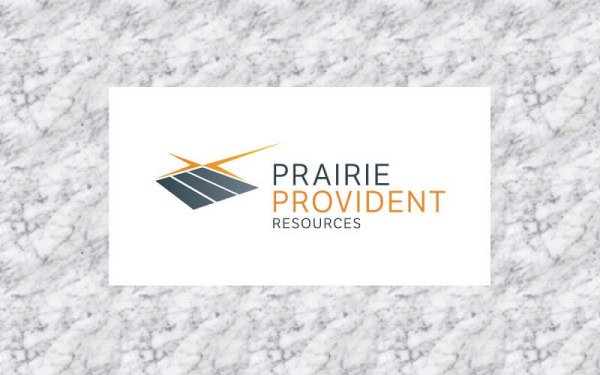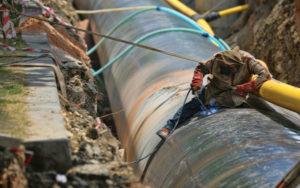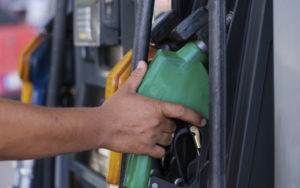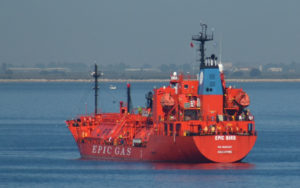CALGARY, Alberta, March 27, 2019 (GLOBE NEWSWIRE) — Prairie Provident Resources Inc. (“Prairie Provident”, “PPR” or the “Company”) is pleased to announce our operating and financial results for the three months and year ended December 31, 2018. PPR’s audited consolidated financial statements (“Annual Financial Statements”) and related Management’s Discussion and Analysis (“MD&A”) for the three months and year ended December 31, 2018 and annual information form dated March 27, 2019 (“AIF”) are available on our website at www.ppr.ca and filed on SEDAR.
Through the year, the Company continued to focus on generating returns for our shareholders through ongoing oil and natural gas liquids drilling and completions activities, high-grading our asset base, and prudently investing capital at a pace designed to optimize adjusted funds flow while growing per share reserves and production. This conservative and disciplined strategy, combined with a supportive global oil price environment for the first nine months of the year, enabled the Company to generate solid adjusted funds flow and higher operating netbacks supported by our oil-weighted asset base.
A key highlight late in 2018 was our acquisition of Marquee Energy Ltd. (“Marquee”), whose assets were focused primarily in the Michichi area targeting Banff light/medium oil. The combination of our respective assets was complementary and has positioned PPR with an expanded oil-weighted growth profile focused in three core areas: Michichi, comprised of PPR’s Wheatland/Wayne assets and Marquee’s Michichi area, Princess and Evi. These three focal areas offer superior economies of scale and lower-risk development drilling opportunities that support PPR’s continued business strategy execution. This acquisition, coupled with the organic growth achieved through our disciplined 2018 capital program, provides momentum to realize further success in 2019 as we anticipate underspending adjusted funds flow due to our low-decline oil assets and commitment to increasing our long-term financial flexibility.
HIGHLIGHTS
- On November 21, 2018, PPR closed the Marquee acquisition, expanding our size and competitive position through economies of scale, an increased inventory of drilling locations and operating synergies which avail us the opportunity to continue improving on our capital efficiencies and enhancing per share metrics.
- Full-year 2018 production averaged 5,372 boe/d (71% liquids), which reflects approximately 1,120 boe/d of production additions from PPR’s successful 2018 drilling program, and 41 days of production from Marquee, offset by the disposition of certain non-core gas-weighted properties and natural production declines. Production in Q4 2018 averaged 5,937 boe/d, 22% higher than Q4 2017 driven by our successful drilling program and the impact of Marquee.
- Oil and liquids production weighting increased 15% year-over-year averaging 71% in 2018, up from 62% in 2017, reflecting our strategy to focus on oil and natural gas liquids opportunities. This shift to a higher liquids weighting also positioned PPR to benefit from a 9% increase in realized prices per boe and a 15% improvement in operating netbacks1 per boe (before realized hedging gains) on a year-over-year basis.
- During 2018, Prairie Provident drilled, completed and brought on production ten gross (10.0 net) new wells for $18.0 million. Annual capital expenditures also included $11.8 million to advance the Evi waterflood, drill two (2.0 net) Slave Point wells in Evi, and invest in facilities, pipelines, land and capitalized overhead. With our 2018 exploration program, PPR’s flow-through share commitment for the year was fulfilled. Our Q4 capital expenditures totaled $7.8 million and were primarily directed to the Evi drilling program.
- Operating netbacks1 before realized hedging loss averaged $17.26/boe for the year ($12.66/boe after hedging loss), a $2.25/boe improvement from 2017 due to realized prices that were $3.69/boe higher, partially offset by higher royalty expenses. Rapid and severe widening of Canadian oil crude differentials in Q4 2018 contributed to a 51% decrease in PPR’s Q4 2018 realized pricing compared to the first nine months of 2018. In response to these low prices, the Company reduced non-essential workovers and reactivations and lowered per boe operating costs by 9% compared to the same period in 2017. Operating netbacks before realized hedging loss was $2.30/boe (negative $0.02/boe after hedging loss). PPR also reduced general and administrative per boe costs by 33% from the same period in 2017, while expanding our operations through production growth and the Marquee Acquisition.
- Net loss was $33.0 million in 2018 compared to a net loss of $47.8 million the prior year, primarily related to non-cash items, while for Q4 2018, net loss totaled $3.5 million compared to $44.1 million in Q4 2017.
- Adjusted funds flow1 in 2018 totaled $8.0 million ($0.07/share) compared to $17.9 million ($0.16/share) in 2017, which reflects higher realized losses on derivative instruments and lower interest expense in 2017, partially offset by higher operating netbacks and a decrease in decommissioning settlements. In accordance with recent direction expressed by Alberta Securities Commission staff regarding funds flow disclosure by oil and gas issuers, PPR’s adjusted funds flow now includes decommissioning settlements that were previously excluded from the calculation, which is reflected in restatements for the current and prior periods. For the year 2018, $2.1 million of decommissioning settlements were included in adjusted funds flow.
- Positive adjusted funds flow for the year combined with the disposition of non-core assets and disciplined capital spending allowed PPR to return capital to our shareholders by continuing to invest in our normal course issuer bid program. During 2018, PPR purchased 395,600 shares at a weighted average cost of $0.35/share.
- On October 11, 2018, PPR closed a $5.5 million equity financing, proceeds from which supported balance sheet strength. At December 31, 2018, the Company had US$47.9 million drawn on our US$65 million revolving facility and US$29.5 million of subordinated notes, plus a working capital deficit of $16.1 million. Based on our 2019 budget forecast for capital expenditures being less than expected adjusted funds flow at current strip pricing, we anticipate greater financial flexibility for growth should commodity prices and the broader market be supportive.
__________
1 Operating netback and adjusted funds flow are non-IFRS measures and are defined below under “Non-IFRS Measures”.
FINANCIAL AND OPERATING HIGHLIGHTS
| Three Months Ended December 31, |
Year Ended December 31, |
|||||||
| ($000s except per unit amounts) | 2018 | 2017 | 2018 | 2017 | ||||
| Financial | ||||||||
| Oil and natural gas revenue | 13,542 | 20,510 | 84,822 | 79,011 | ||||
| Net loss | (3,532 | ) | (44,145 | ) | (32,965 | ) | (47,802 | ) |
| Per share – basic & diluted | (0.02 | ) | (0.38 | ) | (0.27 | ) | (0.42 | ) |
| Adjusted Funds Flow1 | (5,346 | ) | 5,312 | 8,034 | 17,939 | |||
| Per share – basic & diluted | (0.04 | ) | 0.05 | 0.07 | 0.16 | |||
| Net capital expenditures2 | 4,661 | 6,251 | 24,476 | 64,198 | ||||
| Production Volumes | ||||||||
| Crude oil (bbls/d) | 4,042 | 3,233 | 3,676 | 3,178 | ||||
| Natural gas (Mcf/d) | 10,523 | 9,200 | 9,426 | 12,537 | ||||
| Natural gas liquids (bbls/d) | 141 | 106 | 125 | 202 | ||||
| Total (boe/d) | 5,937 | 4,872 | 5,372 | 5,470 | ||||
| % Liquids | 70 | % | 69 | % | 71 | % | 62 | % |
| Average Realized Prices | ||||||||
| Crude oil ($/bbl) | 30.47 | 62.01 | 57.47 | 56.01 | ||||
| Natural gas ($/Mcf) | 1.74 | 1.81 | 1.59 | 2.47 | ||||
| Natural gas liquids ($/bbl) | 40.70 | 54.86 | 49.38 | 37.08 | ||||
| Total ($/boe) | 24.79 | 45.76 | 43.26 | 39.57 | ||||
| Operating Netback ($/boe)3 | ||||||||
| Realized price | 24.79 | 45.76 | 43.26 | 39.57 | ||||
| Royalties | (3.48 | ) | (4.84 | ) | (6.66 | ) | (5.20 | ) |
| Operating costs | (19.01 | ) | (20.78 | ) | (19.34 | ) | (19.36 | ) |
| Operating netback | 2.30 | 20.14 | 17.26 | 15.01 | ||||
| Realized (losses) gains on derivative instruments | (2.32 | ) | 1.90 | (4.60 | ) | 2.47 | ||
| Operating netback, after realized gains/losses on derivative instruments | (0.02 | ) | 22.04 | 12.66 | 17.48 | |||
Notes:
(1)(2)(3) Adjusted funds flow, net capital expenditures and operating netback are non-IFRS measures and are defined below under “Non-IFRS Measures”.
| Capital Structure ($000s) |
As at December 31, 2018 |
As at December 31, 2017 |
||
| Working capital (deficit)(1) | (16,139 | ) | (2,201 | ) |
| Long-term debt | (101,144 | ) | (55,760 | ) |
| Total net debt(2) | (117,283 | ) | (57,961 | ) |
| Debt capacity(3) | 21,827 | 11,291 | ||
| Common shares outstanding (in millions) | 171.9 | 115.9 | ||
Notes:
(1) Working capital (deficit) is a non-IFRS measure (see “Non-IFRS Measures” below) calculated as current assets less current liabilities excluding the current portion of derivative instruments, the current portion of decommissioning liabilities and flow-through share premium.
(2) Net debt is a non-IFRS measure (see “Non-IFRS Measures” below), calculated by adding working capital (deficit) and long-term debt.
(3) Debt capacity reflects the undrawn capacity of the Company’s revolving facility of USD$65 million at December 31, 2018 and USD$40 million at December 31, 2017, converted at an exchange rate of $1.0000 USD to $1.3642 CAD on December 31, 2018 and $1.0000 USD to $1.2545 CAD on December 31, 2017.
The financial impact from depressed oil prices during Q4 2018 is expected to have a lasting effect to the computation of certain financial covenants for 2019. In light of this, the Company has been in active engagement with our lenders and has an understanding that the financial covenant requirements will be adjusted by March 31, 2019.
| Three months ended December 31 |
Year ended December 31 |
|||
| 2018 | 2017 | 2018 | 2017 | |
| Drilling Activity | ||||
| Gross wells | 6.0 | – | 14.0 | 6.0 |
| Net (Working interest) wells | 5.9 | – | 13.9 | 5.7 |
| Success rate, net wells (%) | 67 | N/A | 86 | 82 |
OPERATIONS REVIEW
Throughout 2018, PPR continued to execute our business strategy and posted numerous key achievements. In addition to closing a corporate acquisition, we successfully invested $30 million in our capital program focused on increasing the oil and liquids weighting of our assets; prudently and swiftly responded to volatile and unexpected changes in commodity prices; and ultimately achieved record high reserves and production while generating robust capital efficiencies.
Michichi, AB
During 2018, $7.0 million was primarily directed to the development of three wells at Michichi, all of which were on production by the end of the second quarter. We expanded our footprint in the area through the Marquee acquisition, adding significant reserves, 60+ gross proved drilling locations2 and approximately 1,800 boe/d of current production.
Princess, AB
In the Princess area, development of five Lithic Glauconite wells, pipeline construction and a multi-well satellite were undertaken with $10.5 million invested in the area. The first three wells were brought on production in the Q2 2018, with the final two wells added in mid-July and early September. These five wells are currently producing approximately 1,000 boe/d (77% liquids) in total, based on field estimates, and their success demonstrates the Company’s ability to target higher-value oil and liquids-weighted drilling opportunities. Future development in this area will be supported by PPR’s 33,000 acres of undeveloped lands with plans to resume drilling operations in 2019.
Evi, AB
At Evi, PPR invested approximately $3.3 million for continued advancement of the waterflood project with an additional $7.7 million allocated to drill six (5.9 net) wells. Four (3.9 net) Granite Wash wells were drilled during the fourth quarter of 2019, of which two (2.0 net) came on production in late 2018 with the balance unsuccessful. Two (2.0 net) Slave Point wells were also completed and brought on production in the first quarter of 2019.
2019 OUTLOOK AND GUIDANCE
Prairie Provident is well positioned for further success in 2019 with predictable funds flow from our low-decline oil assets, an attractive inventory of drilling locations, and the ability to scale-up the capital program should supportive commodity prices be sustained. Our three core areas of Michichi, Princess and Evi all offer light/medium oil exposure and focused, lower-risk capital allocation opportunities, and we benefit from a relatively low base decline rate of approximately 22% after incorporating in the higher initial production rate wells at Princess, which feature steeper declines. With over 90% of our production operated and an average working interest exceeding 98% across our core areas, PPR remains focused on continuing to responsibly manage our inventory of high-quality drilling locations for the long term and enhancing our per share production, reserves, and funds flow metrics.
We will remain focused on generating value for our shareholders with a 2019 capital budget of $14.2 million3, $12.3 million of which will be directed to development activities, and we anticipate underspending forecast 2019 adjusted funds flow. This budget and associated production profile is forecast to generate stable annual average production between 6,100 and 6,500 boe/d (69% oil and liquids), targeting an exit rate of approximately 6,650 boe/d. With over 90% of PPR’s 2019 forecast revenue expected to be derived from oil and liquids production, the Company continues to proactively hedge volumes in order to protect economics.
Our full-year 2019 guidance estimates remain unchanged from those presented in PPR’s 2019 budget release dated February 25, 2019 and summarized in the following table. Additional details on Prairie Provident’s 2019 capital program and guidance can be found on our website at www.ppr.ca.
__________
2 Proved drilling locations are locations to which Sproule Associates Limited (“Sproule”), independent qualified reserves evaluator, attributed proved reserves in its most recent year-end evaluation of Prairie Provident’s reserves, effective December 31, 2018. Sproule’s year-end evaluation was in accordance with National Instrument 51-101 and, pursuant thereto, the Canadian Oil and Gas Evaluation Handbook (“COGE Handbook”).
2019 BUDGET AND GUIDANCE SUMMARY
| Average daily production | 6,100 – 6,500 boe/d | |
| 2019 exit production | 6,650 boe/d | |
| Liquids weighting | 69% | |
| Capital expenditures3 | $14.2 million | |
| Development capital | $12.3 million | |
| Operating expenses | $18.70 – $19.95/boe | |
| General & administrative expenses | $3.60 – $3.80/boe | |
| Assumptions: | ||
| WTI (US$/bbl) | $56.90 | |
| CAD WTI (C$/bbl) | $75.00 | |
| WCS (C$/bbl) | $52.60 | |
| Edmonton Light Diff (C$/bbl) | $(6.80) | |
| WCS Diff (C$/bbl) | $(22.30) | |
| AECO gas (C$/GJ) | $1.90 | |
3 Previously, capital budget was disclosed at $18.9 million which included expected decommissioning (ARO) expenditures of $4.7 million. ARO expenditures are now excluded from capital expenditure numbers and included in adjusted funds flow to conform to recent direction from Alberta Securities Commission staff regarding funds flow disclosure by oil and gas issuers and permissible adjustments. This is a change in classification and does not change PPR’s 2019 expected overall cash flows.
ABOUT PRAIRIE PROVIDENT
Prairie Provident is a Calgary-based company engaged in the exploration and development of oil and natural gas properties in Alberta. The Company’s strategy is to grow organically in combination with accretive acquisitions of conventional oil prospects, which can be efficiently developed. Prairie Provident’s operations are primarily focused at the Michichi and Princess areas in Southern Alberta targeting the Banff, the Ellerslie and the Lithic Glauconite formations, along with an established and proven waterflood project at our Evi area in the Peace River Arch. Prairie Provident protects its balance sheet through an active hedging program and manages risk by allocating capital to opportunities offering maximum shareholder returns.
For further information, please contact:
Prairie Provident Resources Inc.
Tim Granger
President and Chief Executive Officer
Tel: (403) 292-8110
Email: [email protected]
Forward-Looking Statements
This news release contains certain statements (“forward-looking statements”) that constitute forward-looking information within the meaning of applicable Canadian securities laws. Forward-looking statements relate to future performance, events or circumstances, are based upon internal assumptions, plans, intentions, expectations and beliefs, and are subject to risks and uncertainties that may cause actual results or events to differ materially from those indicated or suggested therein. All statements other than statements of current or historical fact constitute forward-looking statements. Forward-looking statements are typically, but not always, identified by words such as “anticipate”, “believe”, “expect”, “intend”, “plan”, “budget”, “forecast”, “target”, “estimate”, “propose”, “potential”, “project”, “continue”, “may”, “will”, “should” or similar words suggesting future outcomes or events or statements regarding an outlook.
Without limiting the foregoing, this news release contains forward-looking statements pertaining to: budgeted capital expenditure amounts for 2019 and the allocation thereof; forecast 2019 adjusted funds flow (see also “Non-IFRS Measures” below); future oil and gas production, including expected average 2019 production volumes and liquids weighting, and the 2019 year-end exit production rate; forecast 2019 operating expenses; forecast 2019 G&A expenses; corporate production base decline expectations; benchmark oil and natural gas price assumptions for 2019, including oil price differentials; and future opportunities.
Forward-looking statements are based on a number of material factors, expectations or assumptions of Prairie Provident which have been used to develop such statements but which may prove to be incorrect. Although the Company believes that the expectations and assumptions reflected in such forward-looking statements are reasonable, undue reliance should not be placed on forward-looking statements, which are inherently uncertain and depend upon the accuracy of such expectations and assumptions. Prairie Provident can give no assurance that the forward-looking information contained herein will prove to be correct or that the expectations and assumptions upon which they are based will occur or be realized. Actual results or events will differ, and the differences may be material and adverse to the Company. In addition to other factors and assumptions which may be identified herein, assumptions have been made regarding, among other things: that Prairie Provident will continue to conduct its operations in a manner consistent with past operations; results from drilling and development activities consistent with past operations; the quality of the reservoirs in which Prairie Provident operates and continued performance from existing wells; the continued and timely development of infrastructure in areas of new production; the accuracy of the estimates of Prairie Provident’s reserve volumes; certain commodity price and other cost assumptions; continued availability of debt and equity financing and cash flow to fund Prairie Provident’s current and future plans and expenditures; the impact of increasing competition; the general stability of the economic and political environment in which Prairie Provident operates; the general continuance of current industry conditions; the timely receipt of any required regulatory approvals; the ability of Prairie Provident to obtain qualified staff, equipment and services in a timely and cost efficient manner; drilling results; the ability of the operator of the projects in which Prairie Provident has an interest in to operate the field in a safe, efficient and effective manner; the ability of Prairie Provident to obtain financing on acceptable terms; field production rates and decline rates; the ability to replace and expand oil and natural gas reserves through acquisition, development and exploration; the timing and cost of pipeline, storage and facility construction and expansion and the ability of Prairie Provident to secure adequate product transportation; future commodity prices; currency, exchange and interest rates; regulatory framework regarding royalties, taxes and environmental matters in the jurisdictions in which Prairie Provident operates; and the ability of Prairie Provident to successfully market its oil and natural gas products.
The forward-looking statements included in this news release are not guarantees of future performance and should not be unduly relied upon. Such statements, including the assumptions made in respect thereof, involve known and unknown risks, uncertainties and other factors that may cause actual results or events to differ materially from those anticipated in such forward-looking statements including, without limitation: changes in commodity prices; changes in the demand for or supply of Prairie Provident’s products; the early stage of development of some of the evaluated areas and zones; the potential for variation in the quality of the Lithic Glauconite formation; unanticipated operating results or production declines; changes in tax or environmental laws, royalty rates or other regulatory matters; changes in development plans of Prairie Provident or by third party operators of Prairie Provident’s properties; increased debt levels or debt service requirements; inaccurate estimation of Prairie Provident’s oil and gas reserve volumes; limited, unfavourable or a lack of access to capital markets; increased costs; a lack of adequate insurance coverage; the impact of competitors; and such other risks as may be detailed from time-to-time in Prairie Provident’s public disclosure documents, (including, without limitation, those risks identified in this news release and Prairie Provident’s current Annual Information Form).
The forward-looking statements contained in this news release speak only as of the date of this news release, and Prairie Provident assumes no obligation to publicly update or revise them to reflect new events or circumstances, or otherwise, except as may be required pursuant to applicable laws. All forward-looking statements contained in this news release are expressly qualified by this cautionary statement.
Barrels of Oil Equivalent
The oil and gas industry commonly expresses production volumes and reserves on a “barrel of oil equivalent” basis (“boe”) whereby natural gas volumes are converted at the ratio of six thousand cubic feet to one barrel of oil. The intention is to sum oil and natural gas measurement units into one basis for improved analysis of results and comparisons with other industry participants. A boe conversion ratio of six thousand cubic feet to one barrel of oil is based on an energy equivalency conversion method primarily applicable at the burner tip. It does not represent a value equivalency at the wellhead nor at the plant gate, which is where Prairie Provident sells its production volumes. Boes may therefore be a misleading measure, particularly if used in isolation. Given that the value ratio based on the current price of crude oil as compared to natural gas is significantly different from the energy equivalency ratio of 6:1, utilizing a 6:1 conversion ratio may be misleading as an indication of value.
Non-IFRS Measures
The Company uses certain terms in this news release and within the MD&A that do not have a standardized or prescribed meaning under International Financial Reporting Standards (IFRS), and, accordingly these measurements may not be comparable with the calculation of similar measurements used by other companies. For a reconciliation of each non-IFRS measure to its nearest IFRS measure, please refer to the “Non-IFRS Measures” section in the MD&A. Non-IFRS measures are provided as supplementary information by which readers may wish to consider the Company’s performance, but should not be relied upon for comparative or investment purposes. The non-IFRS measures used in this news release are summarized as follows:
Working Capital – Working capital (deficit) is calculated as current assets less current liabilities excluding the current portion of derivative instruments, the current portion of decommissioning liabilities, the warrant liability and flow-through share premium. This measure is used to assist management and investors in understanding liquidity at a specific point in time. The current portion of derivatives instruments is excluded as management intends to hold derivative contracts through to maturity rather than realizing the value at a point in time through liquidation. The current portion of decommissioning expenditures is excluded as these costs are discretionary and the current portion of flow-through share premium liabilities are excluded as it is a non-monetary liability.
Net Debt – Net debt is defined as long-term debt plus working capital surplus or deficit. Net debt is commonly used in the oil and gas industry for assessing the liquidity of a company.
Operating Netback – Operating netback is a non-IFRS measure commonly used in the oil and gas industry. This measurement assists management and investors to evaluate the specific operating performance at the oil and gas lease level. Operating netbacks included in this news release were determined by taking (oil and gas revenues less royalties less operating costs) divided by gross working interest production. Operating netback, including realized commodity (loss) and gain, adjusts the operating netback for only realized gains and losses on derivative instruments.
Adjusted Funds Flow – Adjusted Funds Flow is calculated based on cash flow from operating activities before changes in non-cash working capital, transaction costs, restructuring costs, and other non-recurring items. Management believes that such a measure provides an insightful assessment of PPR’s operational performance on a continuing basis by eliminating certain non-cash charges and charges that are non-recurring or discretionary and utilizes the measure to assess its ability to finance capital expenditures and debt repayments. Adjusted Funds Flow as presented is not intended to represent cash flow from operating activities, net earnings or other measures of financial performance calculated in accordance with IFRS. Adjusted funds flow per share is calculated based on the weighted average number of common shares outstanding consistent with the calculation of earnings per share.
PPR has restated current and prior period Adjusted Funds Flow to include decommissioning settlements that were previously excluded from the calculation. This adjustment was made in order to meet regulatory requirements. The revised Adjusted Funds Flow numbers incorporate more seasonal variability into previously disclosed numbers as a significant portion of PPR’s decommissioning settlements incurred in the last few years has been in winter access only areas, with considerably higher spend incurred in the winter months.
Net capital expenditures – Net capital expenditures is a non-IFRS measure commonly used in the oil and gas industry. The measurement assists management and investors to measure PPR’s investment in the Company’s existing asset base. Net capital expenditures is calculated by taking total capital expenditures, which is the sum of property and equipment and exploration and evaluation expenditures from the consolidated statement of cash flows, plus capitalized stock-based compensation, plus acquisitions from business combinations, which is the outflow cash consideration paid to acquire oil and gas properties, less asset dispositions (net of acquisitions), which is the cash proceeds from the disposition of producing properties and undeveloped lands.
Source: GlobeNewswire (March 27, 2019 – 9:08 PM EDT)
News by QuoteMedia







